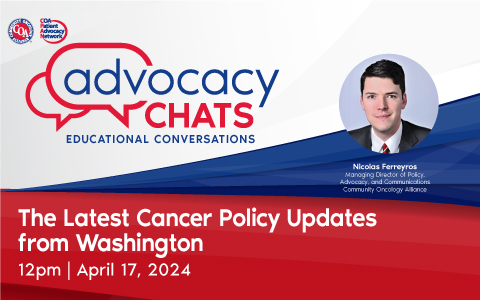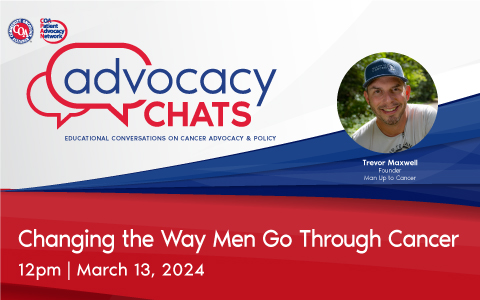Knowledge As Power After a Pancreatic Cancer Diagnosis
Knowledge as Power after a Pancreatic Cancer Diagnosis
November is Pancreatic Cancer Awareness Month, a time when advocates spread knowledge about the disease and call for improved screenings. Invited speaker Cindy Price Gavin, founding executive director of Let’s Win Pancreatic Cancer, joined the Community Oncology Alliance Patient Advocacy Network’s (CPAN’s) Rose Gerber, director of patient advocacy and education, for an overview of pancreatic cancer.
This chat provided an understanding of risk factors and survival rates, highlighted the role of clinical trials, genetic testing, and molecular profiling, and provided educational resources for patients and caregivers. Despite a relatively lower survival rate than other cancers, there are inspirational stories of the patients coping daily with their diagnosis.
Pancreatic Cancer by the Numbers
Each year in the U.S. about 64,000 people are diagnosed with pancreatic cancer. While the average rate of occurrence in the U.S. is 13.3 percent, in the Black community, the rate is higher reaching nearly 16 percent. The rate of occurrence is slightly lower in Hispanics, but certain risk factors, such as type 2 diabetes, raise that rate of diagnosis. There is a link between new-onset diabetes and pancreatic cancer. Unexplained weight loss is often a symptom of pancreatic cancer. About 12 percent of those patients with pancreatic cancer survive beyond five years post-diagnosis.
Because of the significant increase in research, the survival rate has increased from a mere five percent five years ago. In the cancer space, this is a profound leap. The American Association of Cancer Research has a special pancreatic cancer meeting each year. Five years ago, at the first meeting, they had 200 medical professionals. Last year, there were over 700 medical professionals at the annual meeting.
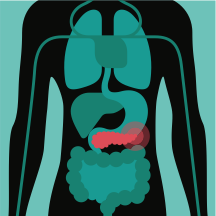
Why Is the Survival Rate So Low?
The pancreas is located deep in the body. A tumor cannot be felt on physical examination and is rarely observable on visual examination. The vague symptoms of pancreatic cancer are common with many other less serious conditions. Because of this, most people are diagnosed at a later stage of the disease. The most effective treatment is a surgical procedure, known as the Whipple procedure, but only 20 percent of those diagnosed are surgical candidates because of the later, advanced stage of diagnosis, when surgery is no longer a treatment option. At this time, there is no easy screening test for pancreatic cancer. The progress that has been made in the treatment of breast, colon, and prostate cancers is because of the prominent, widespread adherence to screenings. To date, this is not the case for pancreatic cancer standard of care.
Risk Factors
Risk Factors That Can Be Changed
There are lifestyle and behavioral risk factors that can be changed and/or controlled to reduce the risk of a diagnosis of pancreatic cancer. These include:
- Smoking
- About 25 percent of pancreatic cancers are believed to be caused by smoking
- Pancreatic cancer risk is twice as high in smokers as nonsmokers
- Obesity
- People with a BMI over 30 are 20 percent more likely to get pancreatic cancer
- Heavy alcohol consumption
- Can lead to chronic pancreatitis
Risk Factors That Cannot Be Changed
There are also factors beyond patients’ control that can lead to pancreatic cancer, including:
- Aging
- As people live longer, aging becomes a greater factor in a pancreatic cancer diagnosis
- The average age of those with pancreatic cancer is 70
- Diseases
- Diabetes
- Pancreatitis, especially chronic pancreatitis, which has a genetic
link in some families - Some types of pancreatic cysts are more likely to develop into cancer
- Inherited Factors
- Best-known genetic mutations: BRCA1/BRCA2, PALB2
- There are a number of less common mutations that increase the risk of developing pancreatic cancer
- Only 10-20 percent of familial pancreatic cancers are caused by known mutations
Currently, there are screening programs for those designated as high risk for pancreatic cancer, including annual endoscopies, ultra-sound examinations, and other tests currently in development. These screening tests are not applicable for general diagnosis because of their invasive nature and the high rate of false positives. However, research efforts are aimed at finding a means of earlier detection in order to improve the ability to better diagnose and treat the disease.
Common Symptoms of Pancreatic Cancer
Many pancreatic symptoms, such as abdominal pain, back pain, stomachache after eating, nausea, and a decreased appetite, are both vague and common. Because of this, those who have these symptoms do not directly correlate the symptoms to a possible pancreatic cancer diagnosis. This results in over 50 percent of all diagnoses being patients with the disease in stages III and IV. The pancreatic cancer community currently has a big push in educating primary care and gastro-intestinal physicians to be aware of the common symptoms that may also be pancreatic cancer indicators.
Other symptoms less common to other diseases but common to pancreatic cancer include:
- Unexplained weight loss
- Dark urine
- Light-colored stool
- Jaundice
- New-onset diabetes
- Existing diabetes suddenly worsens
- Fatigue
There are also some less common symptoms, including pancreatitis attacks, new depression, and anxiety.
Guide for Newly Diagnosed Patients
Newly Diagnosed
The most common and immediate reaction to a diagnosis of pancreatic cancer is panic. Let’s Win is dedicated to helping newly diagnosed patients with a step-by-step guide for what to do.
After Diagnosis
This section covers such information as what to do next, how to get the best treatment, and treatment options. While most patients with cancer think of a clinical trial as a last resort, in the case of pancreatic cancer, because the treatment outcomes of the standard of care are not ideal and the survival rate is so low, many patients with pancreatic cancer consider a clinical trial on day one. It thus becomes important that patients understand exactly how clinical trials work.
Important clinical trial “rules” are:
- All patients receive treatment in clinical trials
- A patient may not get the drug being tested but they always receive standard treatment
- Pancreatic cancer treatments often have limited success
- Clinical trials offer patients a chance to receive the latest treatment
- Patients should join a clinical trial at their healthiest
- More likely to qualify for a trial before treatment and disease has taken a toll
Let’s Win is focused on getting genetically diverse clinical trial participants. Research based upon only Caucasian patients will not move the needle on developing more effective treatment options for all segments of the population.
As Treatment Begins
This section covers how to manage the disease. Options for pain management, as well as anxiety, emotional, and psycho-social support, and other factors that can affect patients are available.
Genetic Testing
Genetic testing can identify inherited mutations such as BRCA, which can affect patient care, as well as other family members. Studies have shown that people with certain genetic mutations respond better to certain treatment options.
Tumor Testing and Molecular Profiling
Tumor testing and molecular profiling can help determine, based on the specifics of a particular case of pancreatic cancer, which treatment might be the most appropriate or effective by examining the genomics of the cancer itself. There may be mutations, certain proteins, or biomarkers that can indicate which treatment would be more effective against which tumor.
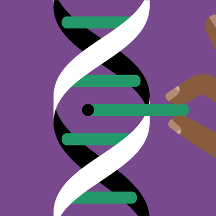
Finding Hope Through the Stories of Others
If they do not already know, it does not take patients and their families long to learn of the severity of a pancreatic cancer diagnosis. They are devastated.
Let’s Win has over 200 medically vetted video patient stories, in both English and Spanish, of long-term survivors to provide hope and inspiration. Those human connections about beating the odds and learning how other people have survived this disease are critical.
Other support services are:
- Pancreatic Cancer Connections – the Let’s Win sponsored online cancer community
- Let’s Win Resources – links to helpful organizations
- Wellness groups
- Online groups from platforms like Facebook
- Other sources of support
- Hospital-based cancer support groups
- Facebook and other social media-based communities
- Private therapists
What is the Status of Early Detection?
While there are many researchers working on blood tests for screening, there is not a definitive test yet. Because there is no test, the focus is on screening people who are at highest risk. This includes people with:
- Certain genetic mutations
- An extensive family history of pancreatic (and other related) cancers
- Chronic pancreatitis
- Pancreatic cysts
It may be possible that in the next five to ten years there will be significant developments resulting in the ability to obtain a much earlier detection of pancreatic and other rare cancers. This will be a key factor in better outcomes for more patients.
CPAN Advocacy Chats are regular virtual 30-minute educational conversations about cancer advocacy and policy with a guest speaker invited to discuss issues important to patients and advocates. Summaries of previous Advocacy Chats are available on the CPAN website.
Past Advocacy Chats



